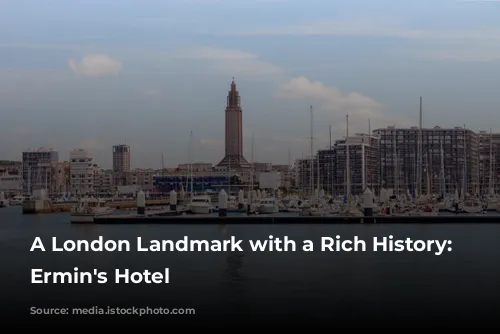St. Ermin’s Hotel stands proudly in the heart of London, a four-star gem nestled next to St. James’s Park Underground station. Its location is prime, just a stone’s throw from Westminster Abbey, Buckingham Palace, and the Houses of Parliament. This captivating hotel holds more than just luxurious accommodations; it embodies a fascinating story that spans centuries.
A Victorian Mansion’s Transformation
St. Ermin’s began its life as a grand mansion block, erected in the late 19th century. Built in the fashionable Queen Anne style, this horseshoe-shaped structure featured a charming courtyard, a haven for residents and their carriages. Its design was typical of the era, with apartments clustered around a central space, offering a blend of privacy and communal living. The building’s footprint grew over time, stretching along Broadway and reaching St. Ermin’s Hill.
In the late 1890s, the mansion block underwent a dramatic transformation, becoming a luxurious hotel. This conversion wasn’t unusual during that period, as many similar buildings possessed a ready-made infrastructure for hotel services. The grand reception areas, originally designed for communal use, seamlessly transitioned into spaces for dining, reading, and socializing.
A Glimpse into Architectural Elegance
The hotel’s transformation into a grand establishment was spearheaded by theatre architect J.P. Briggs, who injected a touch of theatrical grandeur into the space. Briggs’ vision created a captivating sequence of public areas adorned with exquisite plasterwork, showcasing the craftsmanship of the time. The courtyard was dramatically reimagined, morphing into a neo-Baroque space, with a raised verandah leading into a double-height foyer. An undulating balcony, accessible via a grand staircase, provided a touch of elegance.
The hotel’s eastern wing was transformed into a ballroom, featuring a similar undulating balcony. Art Nouveau plasterwork added a touch of artistry to the space, while the anteroom connected it to the former restaurant, now known as The Cloisters, showcasing a lively Rococo design.
A Hotel’s Past Lives: From Speakeasies to Secret Meetings
St. Ermin’s has witnessed some of history’s most significant events, serving as a backdrop for clandestine meetings and covert operations. During the 1930s and World War II, the hotel became a haven for British intelligence agencies, including the Special Operations Executive (SOE). The hotel’s corridors were a playground for spies, including the notorious Cambridge Five double agents, Philby and MacLean, who met their Russian contacts within its walls.
The hotel’s strategic location made it the perfect setting for the SIS (MI6) to conduct their operations, surrounded by other secret organizations. The hotel was used for agent meetings, employee interviews, and even guerrilla warfare training sessions. This clandestine history adds a layer of intrigue to the hotel’s already captivating story.
A Continued Legacy of Elegance and Mystery
St. Ermin’s continues to evolve, undergoing renovations to maintain its grandeur and appeal. The hotel has undergone a recent update to its main entrance, ensuring a welcoming and modern first impression. The hotel is now part of Marriott Hotels’ Autograph Collection, a testament to its enduring legacy and commitment to providing exceptional guest experiences.
St. Ermin’s Hotel, with its rich history, elegant architecture, and connection to some of the world’s most significant events, remains a true London landmark. A stay at this hotel is a journey through time, offering a glimpse into London’s past and a taste of its present-day charm.












